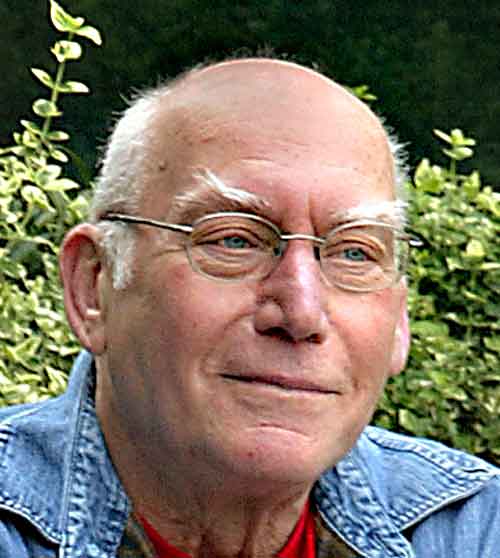There was only one sunny day in January, and it was the day I took the train out to Milwaukie to interview Mike Munk. This was quite a privilege, as I’d read The Portland Red Guide last summer to familiarize myself with at least one Ooligan Press title before starting the master’s in book publishing program. It was, without question, my favorite book of the season, which was right in tandem with my also favorite-but-nevertheless-irritating phrase while conversing with friends: “Did you know …” then followed by whatever juicy tidbit I had learned from The Portland Red Guide. Many thanks to Mike for the interview and for his genuine interest in Oaks Park, the Inman-Poulsen house, old trolley lines, and all those little details of the Portland landscape that make this place an ongoing story.
How did your interest in the research and writing of The Portland Red Guide come about?
My friends were growing tired of hearing me tell them about every single bit of Portland history that I was finding. They said, ‘Listen … maybe you should just write it down?’ That’s what really got me going. They didn’t want to hear any more of these stories!
I’m a former academic; I did academic work in the east and wrote a book on the poverty programs. But when I retired and came back to Portland, where I actually grew up, I figured out that now that I’m retired I could do what I’m really interested in, which turned out to be radical history. The idea of doing it in Portland was inspired by living near the birthplace of John Reed. My idea was that in the same way that all the conventional historic sites related to the dominant narrative of history are considered to be inspiring places (Mount Vernon, etc.), why not try to stimulate people by introducing them to sites that evoke a different side of history?
If you were to tell someone new to Portland what site they should become at least somewhat acquainted with from Portland’s radical history, what site would you tell them to visit?
Most of the really crucial sites are around Skid Row, concentrated between 2nd and 3rd on W. Burnside, which was at the heart of social movement sites in Portland during the early to mid-20th century. I narrated a walking tour of that area for the walking tour company ‘Know Your City’, called ‘A worker’s history tour.’ Even though I was actually sitting in my own living room narrating it [laughs]. But yes, that area would be ground zero, right around SW 3rd and Burnside. There’s a photograph of that corner, which shows the original Wobbly headquarters on the 3rd floor. The building is still there—it’s the Paris Theater now. That’s sort of the concentration if you look at the maps in the book, the numbers are clustered around that area.
What would you say is a recent event that is linked to radical events of the past in Portland?
I wrote a piece for The Oregonian relatively recently about Occupy Portland, because the site they chose, at Lownsdale Square, in front of the county courthouse, that was one of the early sites for demonstrations and protests, and my assumption is that they did not choose it because they were aware of that history. So I wrote up a brief background on that park, which was once called the Plaza Blocks.
Is there any one person or event or period of time you wish had been in the book that you found out later or was excluded in the editing process?
Well, actually, the most common criticism of exclusion that I’ve run into was that I didn’t spend enough time on the 70s, 80s, and 90s. And I think that’s explained by what I was saying about the nature of the politics earlier. After the end of the McCarthy period and the destruction of the organized left parties and organizations, everything was fragmented. And it’s true, I spent less time detailing those individual movements because I have deep reservations about how effective they are politically. I guess I’ve given more attention to the integrated political parties. But that’s been a criticism of the book.
Do you feel like people now are less inspired and less motivated than they once were to enact real social change?
No, I think that there’s still a strong movement for social change. The big difference is that today it’s all fragmented into specific organizations. Identity politics, the environment, war—it’s all diffused, whereas in the past, when people wanted social change they joined political organizations that represented all of those issues and understood that they are all related. And that’s what the socialist and communist parties tried to do—to show that if you are a political organization, you deal with multiple issues, but if you get focused on only one of them, it weakens the whole; it fragments. Now we have dozens of organizations who compete for people’s time, energy, and money. To me, it means there may be the same number of people who are motivated towards radical politics, but their impact is so much less than it would be if they were united in a movement that was multifaceted—that deal with race and income and housing and so on. But that requires an ideology that explains the relationship. So I’ve always been a socialist because I think that these issues stem from a market economy, from capitalism. And that’s what drives the fragmentation.
For more information on Michael Munk and The Portland Red Guide, please visit his website.

